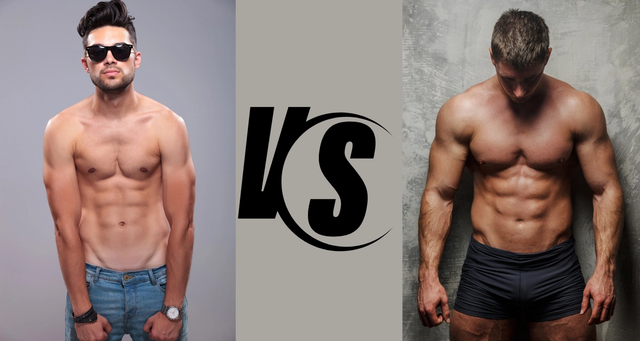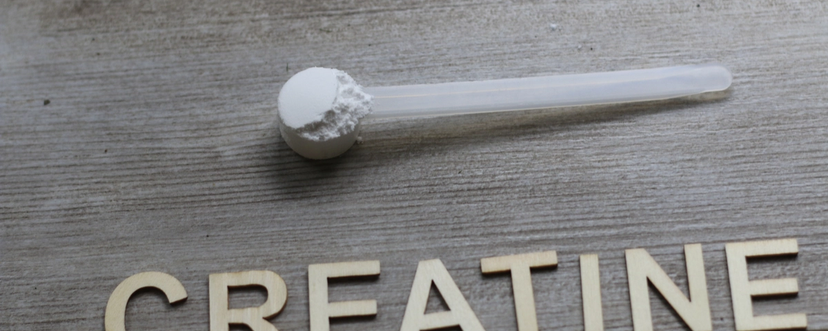
The Best At Home Chest Workouts: Effective Exercises for All Levels
5 of the Best At-Home Chest Workouts
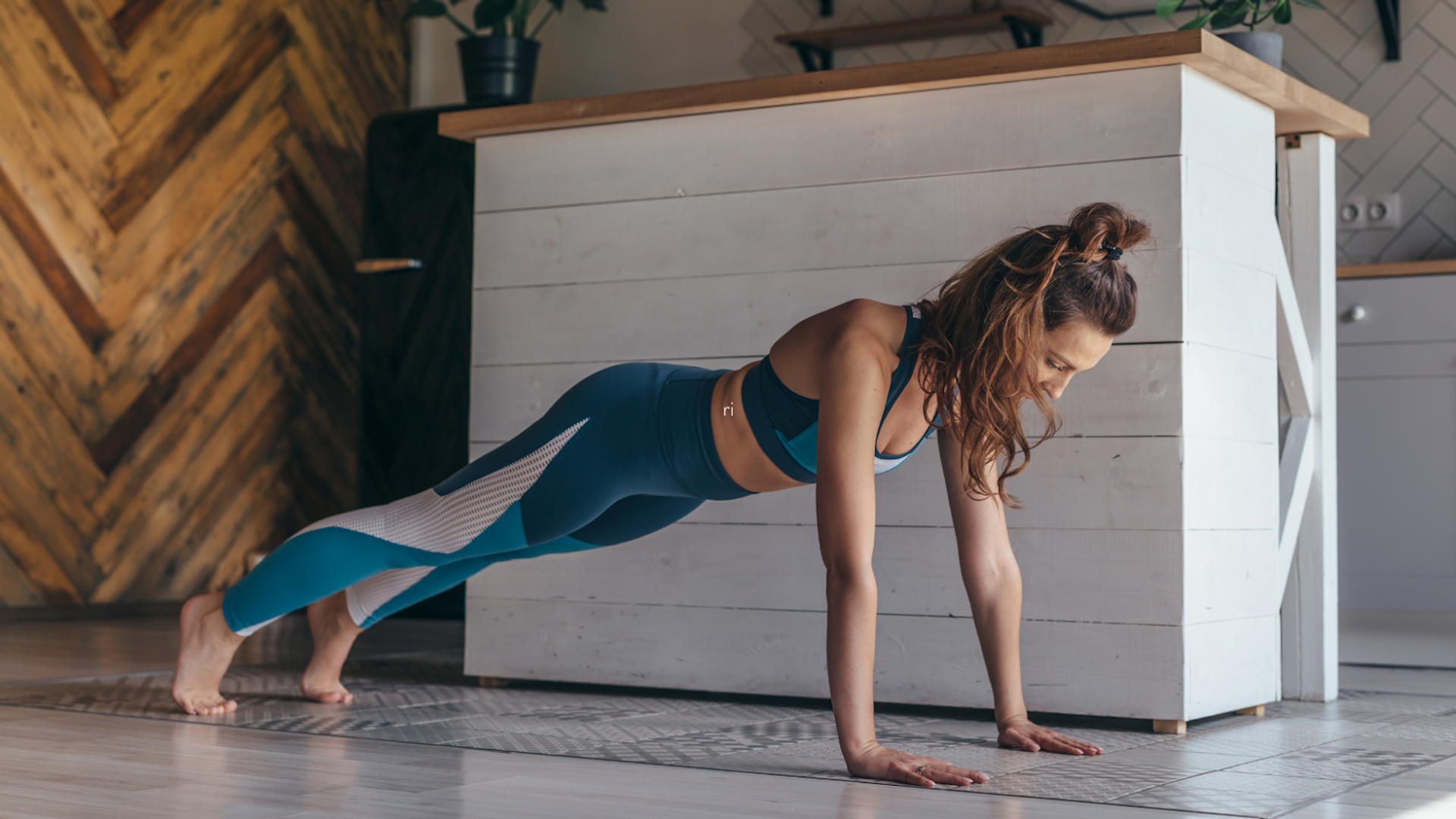
Building a strong, sculpted chest doesn’t require a gym full of equipment. Whether you’re short on time, prefer the comfort of your home, or simply want to mix up your routine, chest workouts can deliver impressive results.
We love using some of these exercises in an upper body workout during our customized personal training routines, and they're also great for you to supplement your training plan in your own time.
Ready for the best chest workout of your life? Let’s get started!
Why Are Chest Workouts Important in Your Routine?
Incorporating chest workouts into your routine is essential for building a balanced, strong, and functional physique. The chest muscles, primarily the pectoralis major and minor, are involved in many daily activities, such as pushing, lifting, and stabilizing movements. Strengthening these muscles and the shoulder joint not only enhances your physical appearance but also improves your overall upper body strength and posture.
Chest workouts are crucial for creating symmetry in your upper body, which helps prevent muscular imbalances that could lead to injury. A muscular chest supports your shoulders and arms, making it easier to perform other exercises like push-ups, pull-ups, and bench presses with proper form and efficiency.
Additionally, chest exercises can boost your metabolic rate by engaging multiple muscle groups simultaneously, contributing to better calorie burn and fat loss.
By incorporating regular chest-focused workouts, you’ll not only enhance your athletic performance but also improve your ability to perform everyday tasks with greater ease and confidence. Our trainers always recommend that dedicating time to chest training will pay off in both strength and aesthetics.
Our Trainers' Top 5 Favorite Chest Exercises

1. Push-Up Variations (No Equipment Needed)
The traditional push-up is a staple of chest workouts because it’s effective, versatile, and requires no equipment. But to really maximize your results, try incorporating these push up variations:
- Muscles worked: Chest, shoulders, triceps, and core.
- Starting position should be the plank, with your hands hands shoulder-width apart.
- Lower your chest until it nearly touches the floor, then push back up.
- Muscles worked: Upper chest and shoulders.
- Place your hands on an elevated surface like a bench or sturdy chair.
- Perform push-ups with your feet on the ground, focusing on the upper chest.
- Muscles worked: Lower chest and shoulders.
- For your starting position, place your feet on an elevated surface while your hands are on the floor.
- Perform push-ups, emphasizing the lower chest.
- Muscles worked: Outer chest and shoulders.
- Spread your hands wider than normal to target the outer chest.
- Muscles worked: Inner chest and triceps.
- Position your hands close together, forming a diamond shape with your thumbs and index fingers.
- Muscles worked: Chest, shoulders, and core.
- Push up explosively so that your hands leave the floor. Land softly and repeat.
Push-ups are not only great for building strength but also excellent for improving endurance and stability. For a full guide to chest-focused stretches to include in your routine, check out our blog on 7 Variations of Chest Stretches to Add to Your Routine.
2. Dumbbell Chest Workouts (At-Home with Weights)

If you have access to a pair of dumbbells, your chest workout at home can include these highly effective exercises:
- Muscles worked: Chest, shoulders, and triceps.
- Lie on your back with a dumbbell in each hand, elbows bent at 90 degrees and hands shoulder width apart.
- Press the dumbbells up until your arms are fully extended, then lower them slowly.
- Muscles worked: Chest and shoulders.
- Lie on your back and hold a dumbbell in each hand with arms extended above you.
- Slowly open your arms wide, lowering the dumbbells out to the sides, then bring them back together.
- Muscles worked: Upper chest and shoulders.
- If you have an adjustable bench, set it at an incline. Perform a press motion similar to the floor press.
- Muscles worked: Inner chest and triceps.
- Hold the dumbbells together in the center of your chest, squeezing them tightly. Perform a pressing motion while maintaining the squeeze.
- Muscles worked: Chest and core.
- Perform the dumbbell press with one arm at a time to engage your core for stabilization.
For more on strength training’s long-term benefits, read our blog on the Impact of Strength Training on Long-Term Health.
3. Resistance Band Chest Workouts (Minimal Equipment)

Resistance bands are an affordable and versatile tool for at-home chest exercises. Here are some exercises to try:
- Muscles worked: Chest, shoulders, and triceps.
- Anchor the band behind you at chest height.
- Hold the handles and press forward, mimicking a bench press motion.
- Muscles worked: Chest and shoulders.
- Anchor the band behind you and hold the handles. Open your arms wide, then bring them together in front of you.
- Muscles worked: Upper chest and shoulders.
- Anchor the band low to the ground. Press upward and forward to target the upper body.
- Muscles worked: Chest and core.
- Perform the chest press with one arm at a time to engage your core for stability.
- Muscles worked: Chest, shoulders, and upper back.
- Hold the resistance band in front of you with both hands. Pull the band apart, keeping your arms and spine straight, then return to the starting position.
Resistance band workouts are not only effective but also gentle on your joints, making them a great option for beginners or those recovering from injuries. To avoid workout mishaps, check out our tips on Preventing Common Workout Injuries.
4. Bodyweight Chest Workouts for Beginners

If you’re new to fitness or looking for easy at-home chest workouts, these beginner-friendly moves are a great place to start:
- Muscles worked: Chest, shoulders, and triceps.
- Perform a push-up with your knees on the floor to reduce the intensity while maintaining proper form.
- Muscles worked: Chest and shoulders.
- Stand a few feet away from a wall and place your hands on it at shoulder height. Perform a push-up against the wall.
- Muscles worked: Chest and triceps.
- Use two sturdy surfaces (like chairs) to perform dips, targeting the lower chest.
- Muscles worked: Chest, shoulders, and core.
- Transition between a forearm plank and a push-up position to engage multiple muscle groups.
- Muscles worked: Lower chest and shoulders.
- Sit on the floor with your hands behind you, fingers pointing toward your feet. Push up through your palms, lifting your chest.
For more tips on effective at-home workouts, visit our blog on the Best Workout Routines at Home.
5. Advanced At-Home Chest Workouts
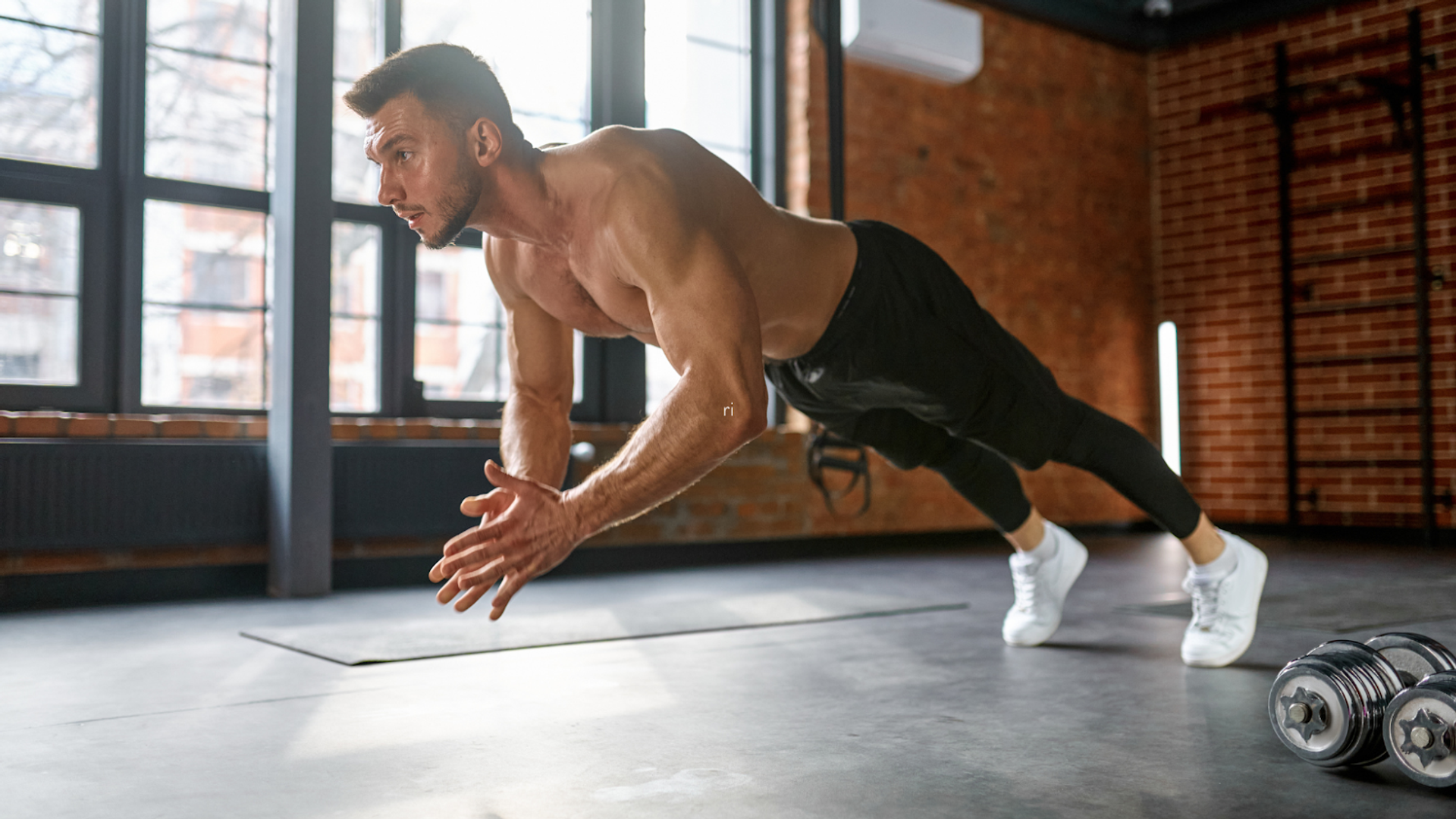
For those with more experience, these challenging exercises will take your chest workouts to the next level:
- Muscles worked: Chest, shoulders, and triceps.
- Perform a push-up while extending one arm out to the side, placing more weight on the other arm.
- Muscles worked: Chest, shoulders, and triceps.
- Position your hands lower on your torso and lean forward during the push-up to increase difficulty.
- Muscles worked: Chest, shoulders, and core.
- Push up explosively enough to clap your hands in the air before landing back in the push-up position.
- Muscles worked: Chest, shoulders, and triceps.
- Add a weight plate or weighted vest to your back for increased resistance.
- Muscles worked: Chest, shoulders, and core.
- Perform a push-up with one arm, keeping your body stable and aligned.
- Muscles worked: Chest, shoulders, core, and obliques.
- While performing a push-up, bring one knee toward your elbow on the same side, alternating sides with each rep.
If you’re serious about progressing in your fitness journey, consider our strength training services or explore our bodybuilding programs for personalized guidance.
How to Make Your Chest Workouts Even Better
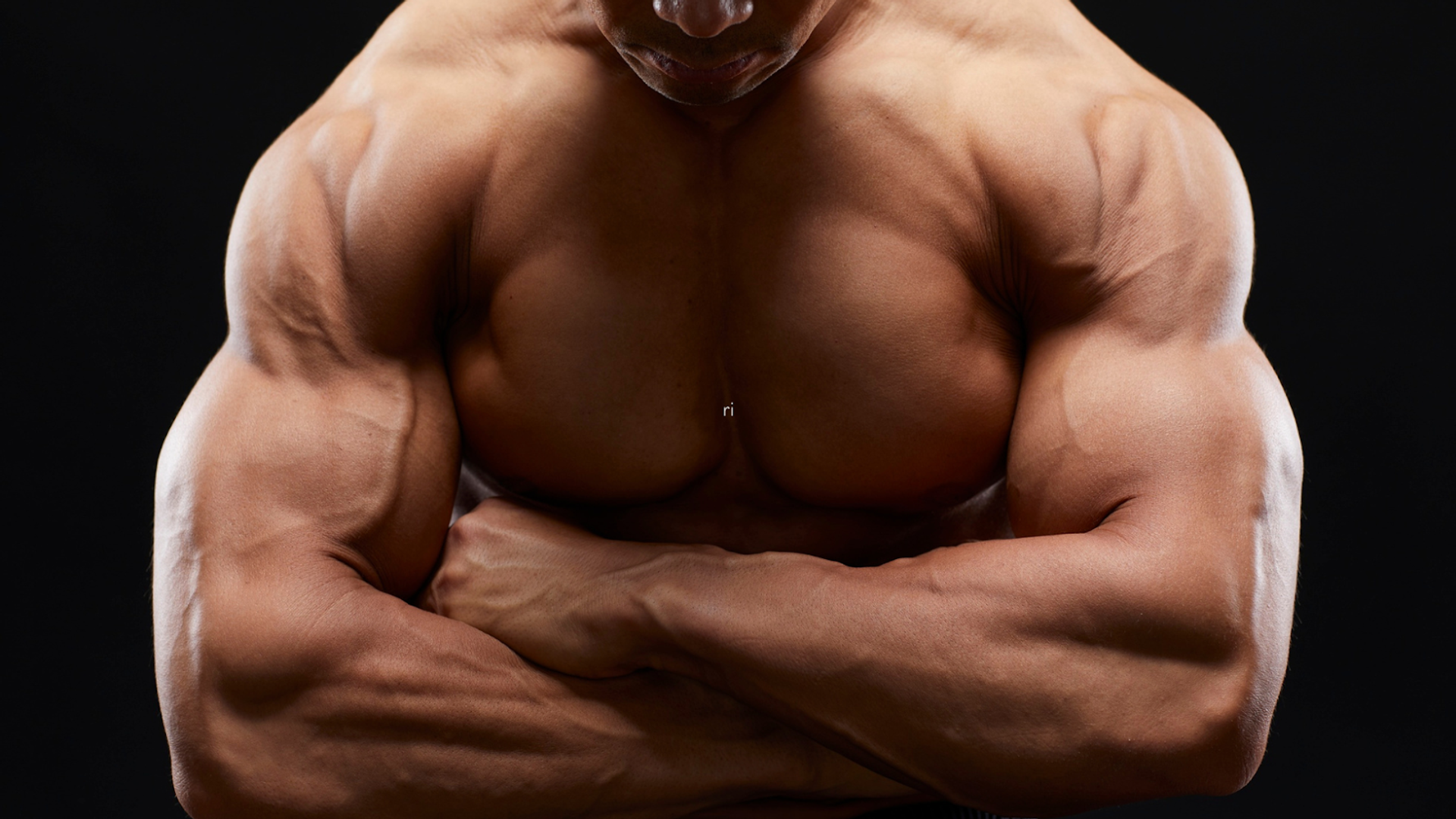
Focus on Compound Movements
Compound exercises are a game-changer for chest workouts. These multi-joint movements, like bench presses, push-ups, and dips, engage not only your chest but also your shoulders and triceps, giving you more bang for your buck.
To maximize results, aim to progressively overload your muscles by increasing the weight, reps, or intensity over time. For example, if you’re doing push-ups, try variations like incline, decline, explosive or off set push-ups to keep your chest muscles challenged and growing.
Don’t Skip the Stretch
Stretching is often overlooked, but it plays a vital role in improving flexibility, range of motion, and muscle activation during workouts. Dynamic stretches like arm circles and chest openers are excellent for warming up your chest muscles before exercising. After your workout, static stretches such as a doorway stretch or lying chest stretch can aid in recovery and reduce soreness.
Vary Your Tempo
Tempo training is a simple yet effective way to boost the intensity of your chest workouts. Slowing down the eccentric (lowering) phase of an exercise, like during a bench press or push-up, increases time under tension, which promotes muscle growth.
Conversely, explosive movements during the concentric phase help build power. Experimenting with tempo can add a new layer of challenge to your routine and prevent workout monotony.
Incorporate Isolation Exercises
While compound movements are essential, isolation exercises can help target specific areas of your chest for balanced muscle development. Exercises like chest flys, pec deck machines, and cable crossovers focus solely on your chest muscles, allowing for better muscle activation and definition. Incorporating these exercises toward the end of your workout can be an excellent way to fully fatigue the chest and achieve a well-rounded routine.
Add Stability Challenges
Introducing instability into your chest workouts can engage your core and smaller stabilizing muscles, enhancing overall strength and control. Try using tools like a stability ball, BOSU ball, or even resistance bands.
For example, perform push-ups with your feet on a stability ball or do single-arm chest presses on a bench while holding a weight in the other hand to offset balance. These variations not only increase difficulty but also improve functional strength.
However, always make sure to maintain proper form - for example for a standard push up, make sure to keep your hands shoulder width apart and focus on proper extension.
Prioritize Recovery and NutritionYour chest muscles need adequate recovery to grow stronger after workouts. Ensure you’re getting at least 48 hours of rest before targeting your chest again - even if it's a simple set of push ups. In addition, focus on post-workout nutrition to support muscle repair. Include a combination of protein and carbohydrates, such as a protein shake with fruit, to kickstart recovery. Proper hydration, sleep, and stretching will further enhance recovery, helping you get back to your workouts stronger and ready to perform.
Our Trainers' Quick Tips for Maximizing Your At-Home Workouts
- Warm Up and Cool Down: Always start with dynamic stretches and finish with static stretches to prevent injuries. Try these chest stretches for trainer-approved results.
- Focus on Form: Proper technique is crucial for avoiding injuries and maximizing results. It's best to check all your exercises and workouts with your trainer first - they'll recommend when you need to keep your knees bent, legs straight, feet flat, etc.
- Progress Gradually: As you build strength, increase resistance or try advanced variations to keep challenging your muscles. Addint too much weight too soon can really set you back.
- Stay Consistent: Consistency is key to seeing progress. Schedule your chest day workouts and stick to them.
- Mix It Up: Rotate through different exercises to avoid plateaus and keep your workouts engaging. Incorporate stretching weight and pressing exercises to keep things moving.
FAQs About At-Home Chest Workouts
Can I build a strong chest with at-home workouts?
Absolutely! By incorporating exercises like push-ups, dumbbell presses, and resistance band movements, you can effectively target your chest muscles without stepping into a gym. Consistency and proper form are key.
How often should I do at-home chest workouts?
It’s recommended to work your chest 2-3 times a week, allowing at least 48 hours of recovery between sessions. Rest is essential for muscle repair and growth, and can help with maintaining muscle mass and controlling body weight long-term.
What equipment is best for at-home chest workouts?
While you can achieve great results with just bodyweight exercises, having a pair of dumbbells or resistance bands can add variety and increase the challenge of your workouts.
Are these workouts suitable for beginners?
Yes! Many of the exercises w've highlighted here, like regular push ups, knee push-ups and wall push-ups, are beginner-friendly. You can start with simpler movements and gradually progress to more advanced variations as you build strength.
How can I prevent injuries during chest workouts?
To avoid injuries, always warm up before starting, focus on proper form, and avoid overtraining. Incorporating chest stretches and listening to your body can also reduce the risk of strain. For more tips, check out our blog on Preventing Common Workout Injuries.
Start your Svetness journey today
Get a free consultation and see how our trainers can transform your wellness journey.


